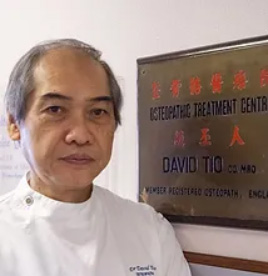Orchard Tower
400 Orchard Road #09-01 Singapore 238875
Asthma is a common and sometimes debilitating respiratory disorder which can affect people of all ages.
Sufferers may occasionally experience difficulty in breathing, accompanied by a wheeze and a tight, restricted chest. Other symptoms may include coughing, vomiting and shaking.
People with asthma have sensitive airways in their lungs. When they are exposed to certain triggers, their airways narrow, making it hard for them to breathe.
Two main factors cause the airways to become narrow:
There are two different types of asthma – allergic and non-allergic.
In allergic asthma, the symptoms are usually the result of inhaling or consuming some kind of external substance, such as pollen, dust mites, mold, MSG (monosodium glutamate), wheat or dairy produce.
non-allergic asthma can be triggered by a range of different factors, including fatigue, physical exertion, some medications, stress, or exposure to environments which are cool and damp.
Asthma is basically a breathing problem resulting from increased sensitivity of the airways which is provoked by a range of stimuli or “triggers”.
The bronchial spasm, or narrowing of the airways, is recurrent and reversible.
When an asthma attack starts, the muscle layer within the airway wall contracts, causing the airways to narrow and mucous to be secreted into the airways.
As a result, it is more difficult for air to flow in and out of the lungs and breathing becomes difficult.
The “wheezing” sound of asthma is caused by the noise of air passing through the narrowed, swollen airways. In very severe cases, so little air is passing in and out that almost no sound is audible.
Sometimes, a small amount of thick, stringy phlegm (mucous) is produced.
If the attack is severe, the airways become very narrow and the diaphragm, which is the main breathing muscle, has to call on the rib, neck and abdominal muscles to help. The result is more energy being used. This causes severe breathlessness and can lead to exhaustion.
Osteopathy offers assistance to asthma sufferers by working on all aspects of the breathing mechanism, including the ribs, spine, diaphragm and other muscles of breathing.
It also works on the nerve control of the chest as well as blood and fluid supply to the bronchiand lungs. Osteopathy can also play an important preventative role in the care of someone who is suffering from asthma.
Osteopaths recognize that the functions of the human body are inherently linked and can affect each other.
With this in mind, the Osteopath gently works with the body’s structure, to enhance and improve the mechanics of breathing by:
Other areas of management include the formulation of an individual exercise programme – with emphasis on breathing exercises – and the avoidance of aggravating factors.
Your Osteopath also provides advice on diet, posture, lifestyle and first aid measures during an attack.
No! Osteopaths recognize the important role of anti-inflammatory medication and broncho-dilators in the treatment of asthma, especially in acute attacks.
Osteopaths work in conjunction with other health care practitioners with the long-term aim of decreasing the patient’s dependence on medication.

